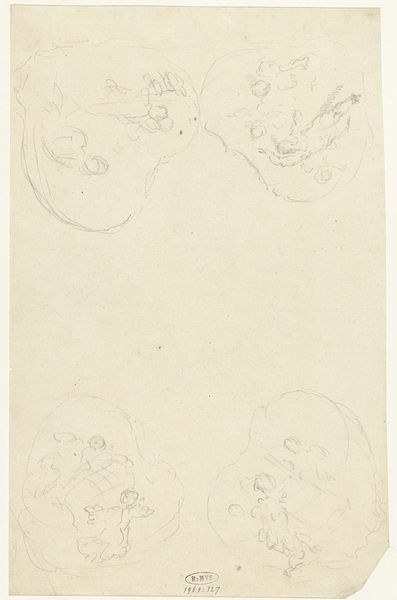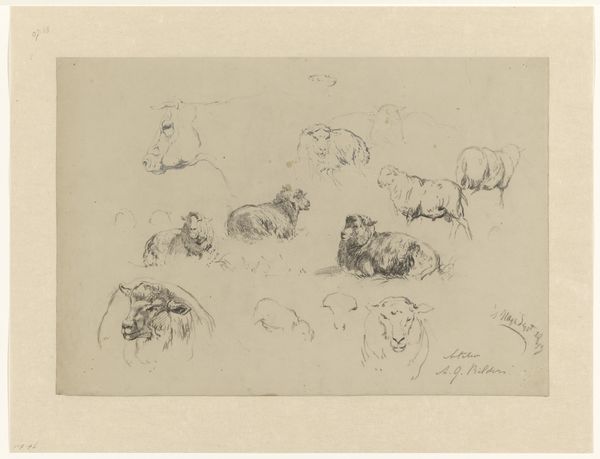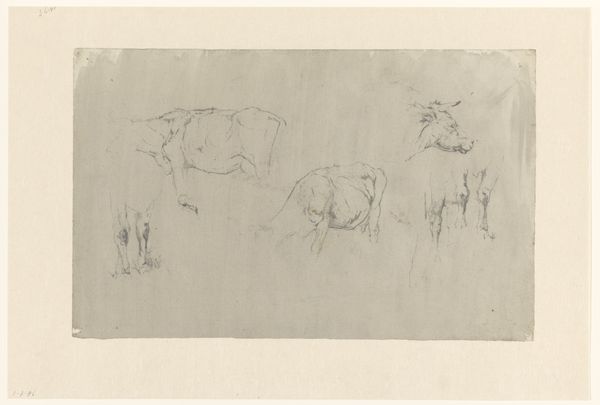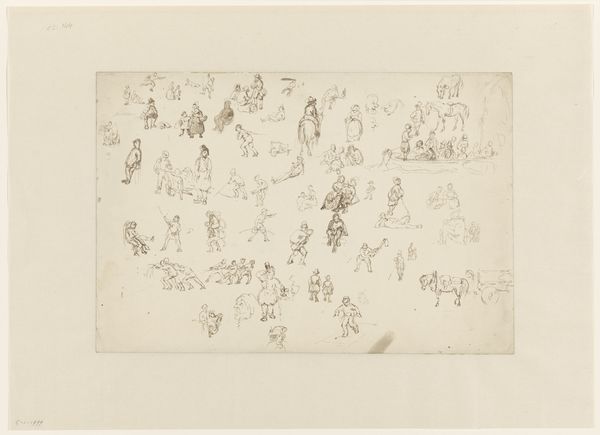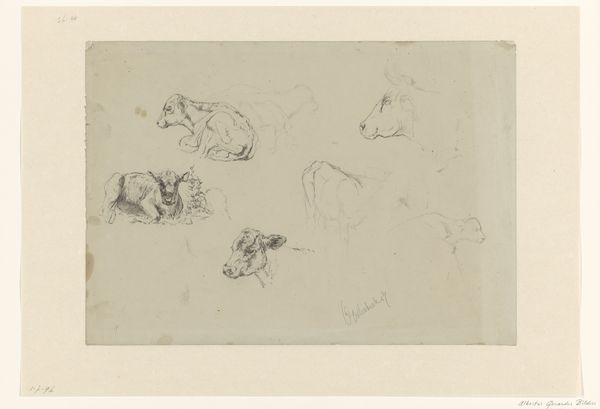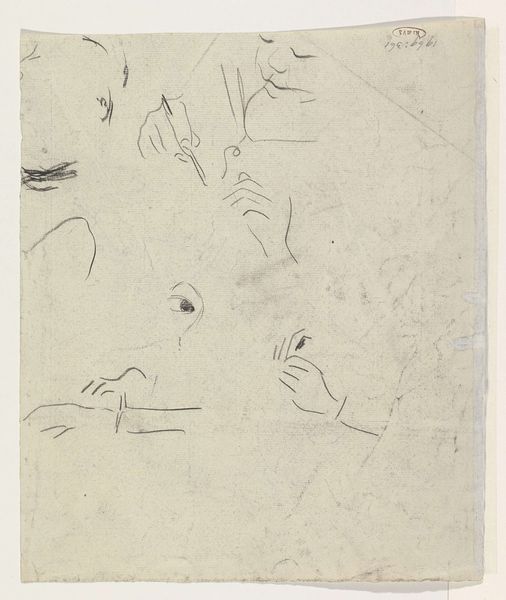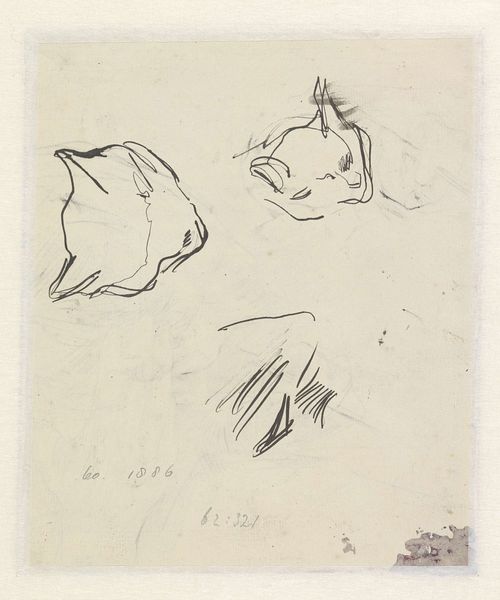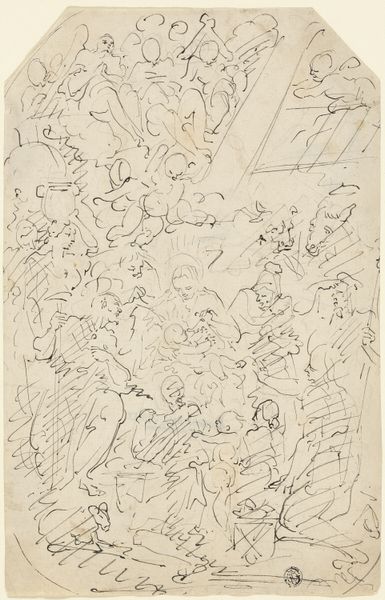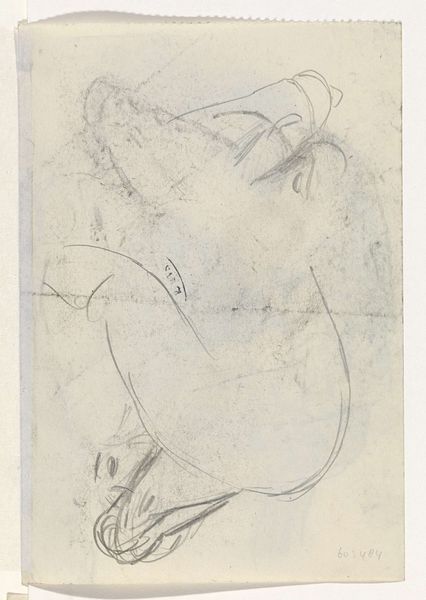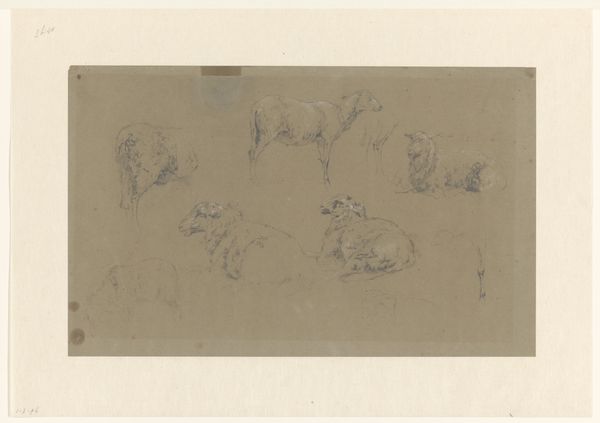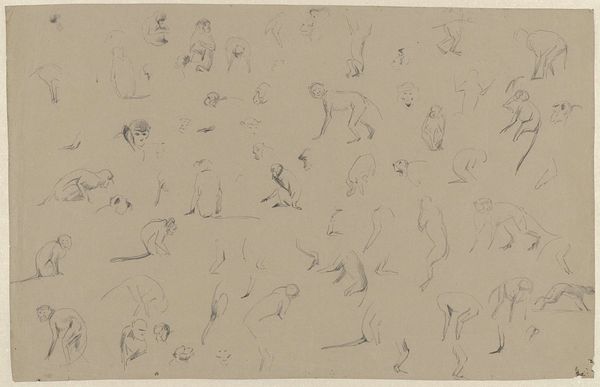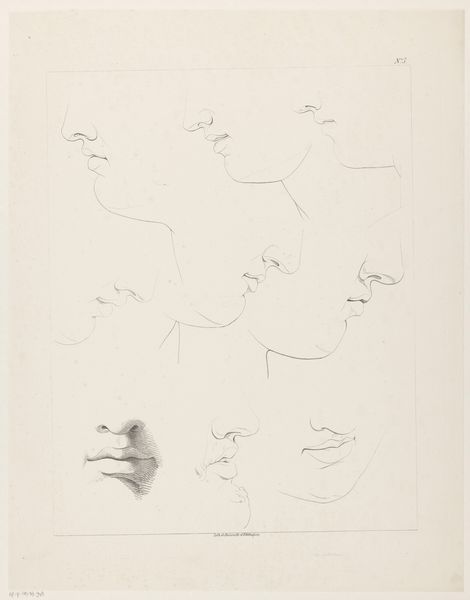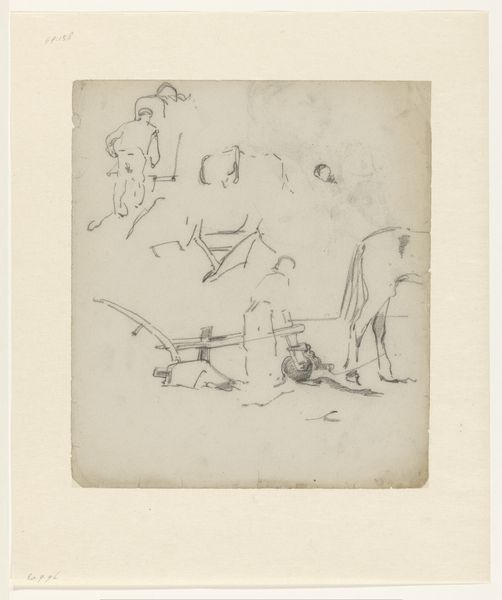
#
light pencil work
#
ink paper printed
#
pencil sketch
#
incomplete sketchy
#
ink drawing experimentation
#
sketchbook drawing
#
pencil work
#
watercolour illustration
#
sketchbook art
#
watercolor
Dimensions: height 248 mm, width 226 mm
Copyright: Rijks Museum: Open Domain
Editor: This is Jan Mankes' "Studieblad met muizen," a study sheet of mice from around 1914 to 1916, created with ink and watercolor on paper. It feels incredibly intimate, almost like a private glimpse into the artist's sketchbook. The rapid, repeated strokes make the mice appear full of energy. What do you make of this work? Curator: Well, this study sheet, precisely because of its informal nature, gives us insights into the artistic process of the time, and into the man. Sketchbooks weren't always considered finished products, they served as a crucial space for exploration and experimentation. Looking at this, consider the cultural context. During this period, there's a growing fascination with naturalism and the depiction of everyday life. But how is Mankes framing this everydayness? Editor: I see. It's not grand or heroic, is it? Just quiet observations of tiny creatures. So, he is interested in their pure being without making it part of an epic composition... Curator: Exactly! There’s an element of quiet rebellion against the academic art of the time. It’s about shifting attention to the overlooked. Mankes creates a kind of humble, domestic sphere on paper, far removed from the political stage but reflective of his social setting: a time when natural sciences blossomed. What implications does that have for viewing this artwork, for you? Editor: Thinking about that, it becomes less about the individual "artwork" and more about the broader cultural shift towards valuing scientific observation and humble subject matter. I almost overlooked how Mankes’ studies may intersect these larger political implications. Curator: Precisely. It's a reminder that even seemingly small artworks are deeply embedded in larger cultural dialogues. It shows us how tastes are defined and validated. Editor: I never really thought about it this way. Curator: That's why we’re here.
Comments
No comments
Be the first to comment and join the conversation on the ultimate creative platform.
